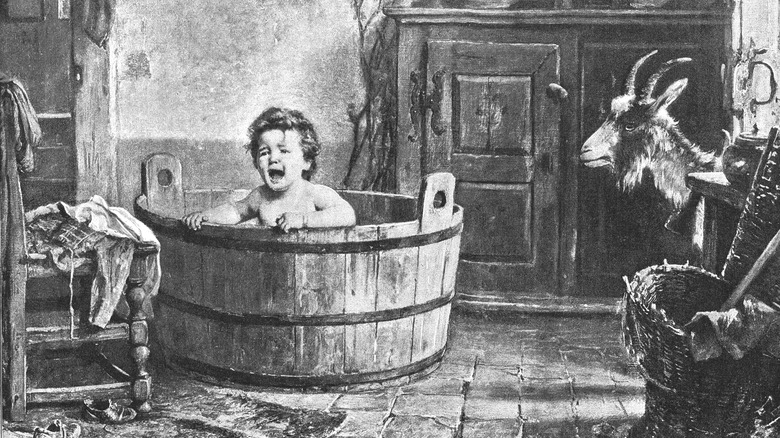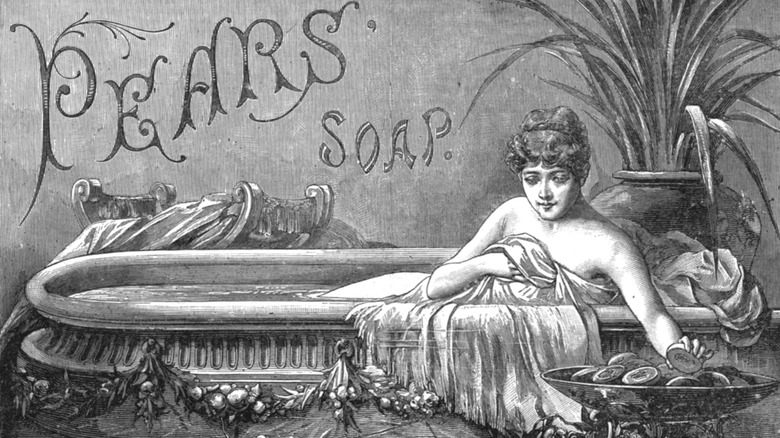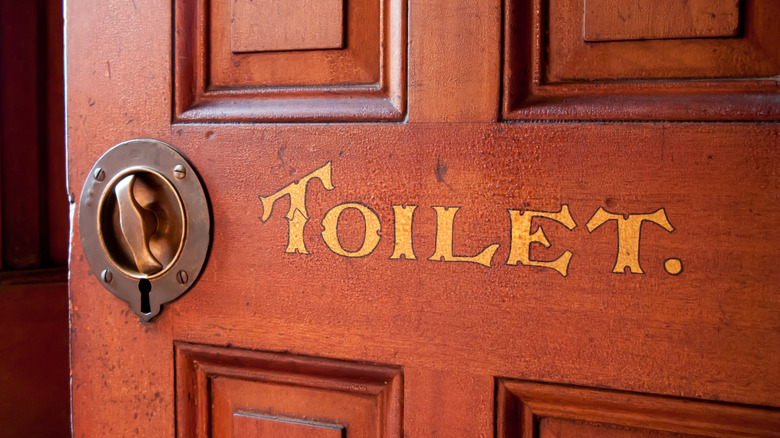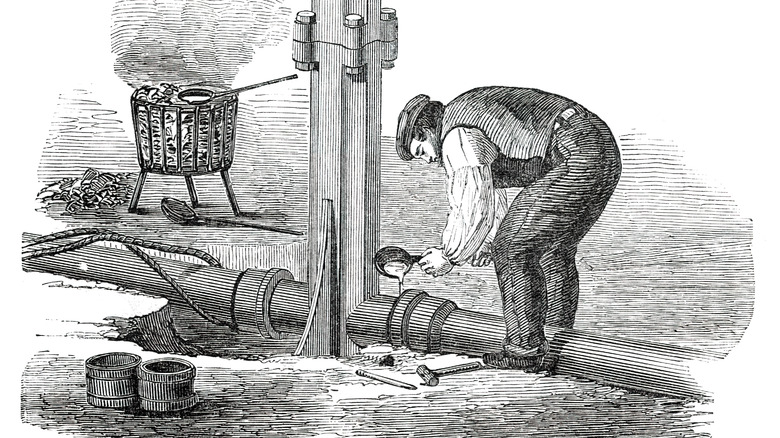Why Victorian Bathrooms Were So Dangerous
The Victorian Era was an age of great technological innovation coupled with terrible health and safety standards. It should come as no surprise that the people who allowed their children to get mangled by machinery in factories didn't have very safe home's either. People drank water from lead pipes, put asbestos in their buildings — and transformed their bathrooms into terrifying deathtraps.
Life before hot water must have been pretty grim, and you can hardly blame the Victorians for wanting an easy solution to icy bathrooms that didn't involve using a stove. However, one of the solutions they came up with proved to be fatal on occasion. Rather than heating the water separately and piping it into the bath, the bathtub itself was heated, in much the same way you'd heat a saucepan. In 1868, the geyser heating system was invented in the U.K. by Benjamin Waddy Maughan — this gas burner could be fitted directly under the bath so that people were able to heat up the water directly. Those of us with some common sense may immediately foresee the problems with this system, which could potentially reach scalding temperatures or even boil somebody alive.
Baths could get extremely hot, and gas fumes created by the burner could also present some serious dangers. One story from the Edinburgh Evening News in 1888 for example recounts the story of a man who appeared to have suffocated on gas fumes in his bathroom and fallen unconscious into the bath. While passed out he was boiled alive like a lobster. When he was discovered, not only was the bathwater boiling, the pipes in the bathroom had melted.
Poisonous soaps
Aside from the dangerous plumbing and heating, bathrooms in Victorian England were often stocked with products laced with arsenic. For various reasons, 19th-century people in general just loved putting arsenic in everything — including soap. Arsenic produced a pleasing shade of green that was very fashionable at the time, and arsenic-based beauty products were used to whiten the skin. Although people had realized something was up with the dangerous powder by the 1860s, arsenic wasn't regulated in Britain until 1903.
Some products even came with doctor-approved safety guarantees. According to the Wellcome Collection, Dr. McKenzie's arsenic soap was advertised as containing an "absolutely harmless" dose of arsenic to foster healthy skin, a claim that is particularly amusing/terrifying given that arsenic poisoning can cause grotesque skin lesions, as well as death. Unfortunately, the dangers of Victorian bathrooms didn't end there.
Terrifying toilets
Although the 19th century was actually a time of great improvements in terms of sanitation, early Victorian plumbing and sewage systems left much to be desired. Sewage filled the River Thames in London, and people relied on cesspools to dispose of their waste. Unfortunately, waste disposal wasn't just disgusting — it could also be quite dangerous due to the build-up of explosive gases. In London, it wasn't unusual for the city's cesspits to sometimes catch fire.
Cesspools in people's houses were often in the basement, where it was hoped the smell would be trapped out of smelling distance. The toilet would be placed over the stinky chamber, and the poorer you were the closer the waste would end up to your living quarters. Keeping candles or gas lamps in close proximity to the privy could be a bit of a gamble. In some people's homes, the buildup of methane and hydrogen sulfide would occasionally cause toilets to spontaneously explode.
Loads and loads of lead
Soft and pliable, lead has been a go-to material for making pipes throughout history, including during Roman times and the Victorian era. As reported by The New Statesman, the useful metal was once so ubiquitous that the word "plumbing" actually derives from "plumbum," the Latin word for lead. It was used for everything from paint to pipes, to soldering things like toilet cisterns to walls — great if you want to make your bathroom bomb-proof but not so good if you'd like to stay healthy.
Unfortunately, exposure to lead can be crippling — ingesting it or inhaling its fumes can damage your nervous system, and even your IQ, and it will eventually kill you in large enough doses (via the World Health Organization). In the Late Victorian period, people began to cotton on to this fact, when lead-contaminated environments and especially lead-saturated water made people very ill. In Sheffield in 1889, for example, lead pipes and lead-contaminated drinking water were found to have caused a case of mass poisoning. Similarly in the U.S., lead hot water pipes were identified as the cause of serious illness in Philadelphia.
While the effects of lead on humans were well documented during the 19th century, it was just too darn convenient for the Victorians, and lead pipes were not phased out in the U.S. until the 20th century. Lead was used on such a massive scale in the U.S. and U.K. that pipes are still being removed today.



